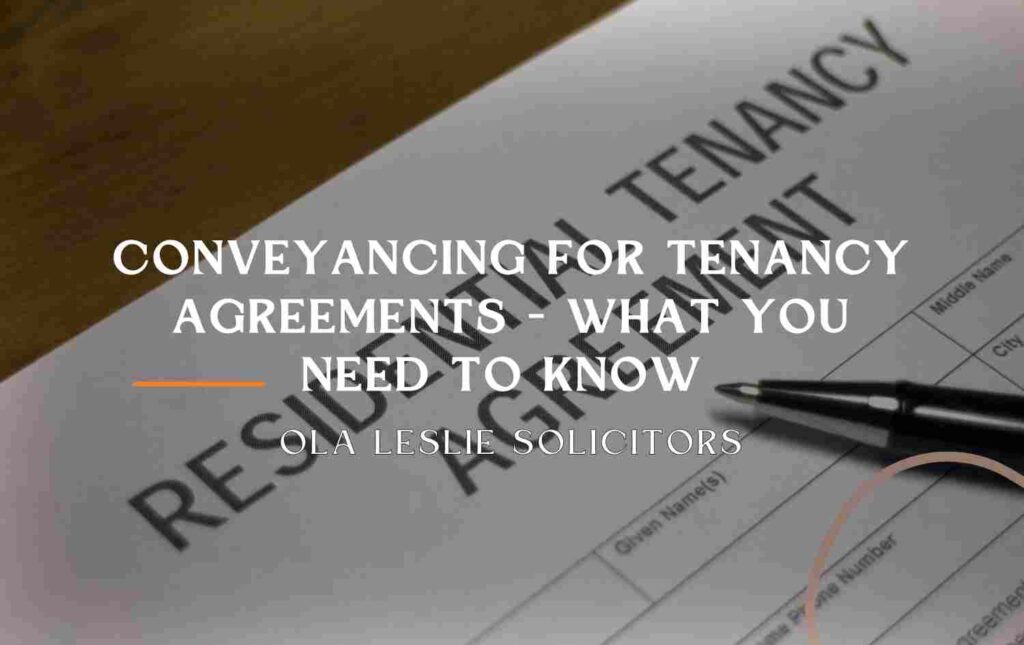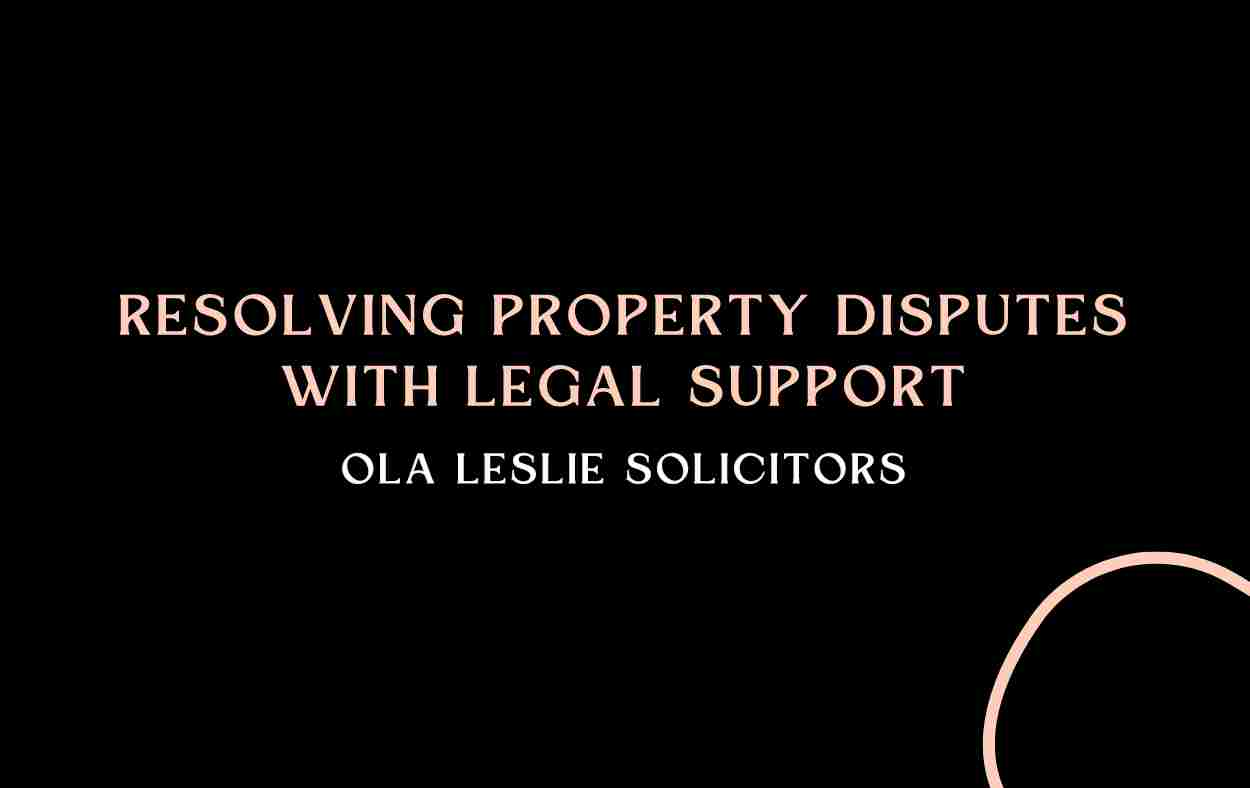Conveyancing for Tenancy Agreements - What You Need to Know
- Ola Leslie Solicitors

A tenancy agreement is an important document that protects the rights of both parties: landlord and tenants. It is highly recommended to understand the key terms used in tenancy agreements to ensure a smooth tenancy experience. In most cases, the original contract should mention the details of the new landlord and new tenants, the details of the property, the rent amount, the deposit amount, and any specific conditions and notice period mentioned in the tenancy agreement. To Mention all these details are crucial as they will resolve any disputes that may arise in the future.
According to the law, both the landlord and the tenant have certain tenancy rights and duties that are outlined in the agreement. For example, tenants must pay their rent on time, and the landlord must repair the building or do any necessary maintenance. In this article, we will discuss the tenancy agreement and its 6 key elements.
Key Elements of a Tenancy Agreement
Parties detail:
The tenancy agreement should clearly state the details of both parties. In most cases, these details include the full legal name of the landlord and tenants to identify the individual or company, address, usually the residence place, and contact details like phone No and email address of both landlord and tenants.
Property detail
It is vital to include all the detail in the written tenancy agreements regarding the property area and structure, like size and layout, number of bedrooms and bathrooms, full address of the property, property types like apartment, house or building, and any restriction like smoking, pets, noise level or any alteration and any specific amenities included I the properties. By including these details, both parties clearly understand the property characteristics and any restrictions regarding the property.
Time Duration:
The rental agreement should clearly state the time duration the property is rented for; it should specify the start and end date (if any) and if the property is rented for fixed-term tenancy or on a variable basis. These details ensure that both parties have a clear understanding of their commitments according to the timeline for the rental arrangement.
Rent and deposits:
In a tenancy agreement, it is crucial to add detail about the rent and deposits because this ensures transparency and avoid any kind of misunderstanding, that includes the rent amount that needs to pay each month and the due date for rent payments so that tenant knows when he is expected to make the payments, it’s also advisable to mention the consequences, like fines for delay payments, the acceptable mode of payments like online payments, card payments, cheque payments or any other accepted payments that both parties agreed on the total amount of deposits.
Termination information:
The written tenancy agreement should mention the conditions under which the landlord or tenant can terminate the agreement. This is an important clause as it mentions all the conditions which establish the procedure and requirements for ending the tenancy before the agreed period of time.
The agreement should also mention the notice period if any party terminates the contract before or after the specific time. Also, this clause says any penalties or fees if someone breaks any notice period. Or if there is any requirement to serve notice.
Rules and Responsibilities:
Tenancy agreements should mention all the rules and responsibilities for both parties involved. Landlord responsibilities primarily include the maintenance of the property, structural repairs, maintaining the essential system and ensuring that the property is secure and meets the relevant health and safety requirements.
In the same way, the agreement should also specify the tenant’s responsibilities, such as keeping the property clean, using the property for a specific purpose only, adhering to the rules of other tenants, reporting any maintenance issues, and doing minor repairs.









